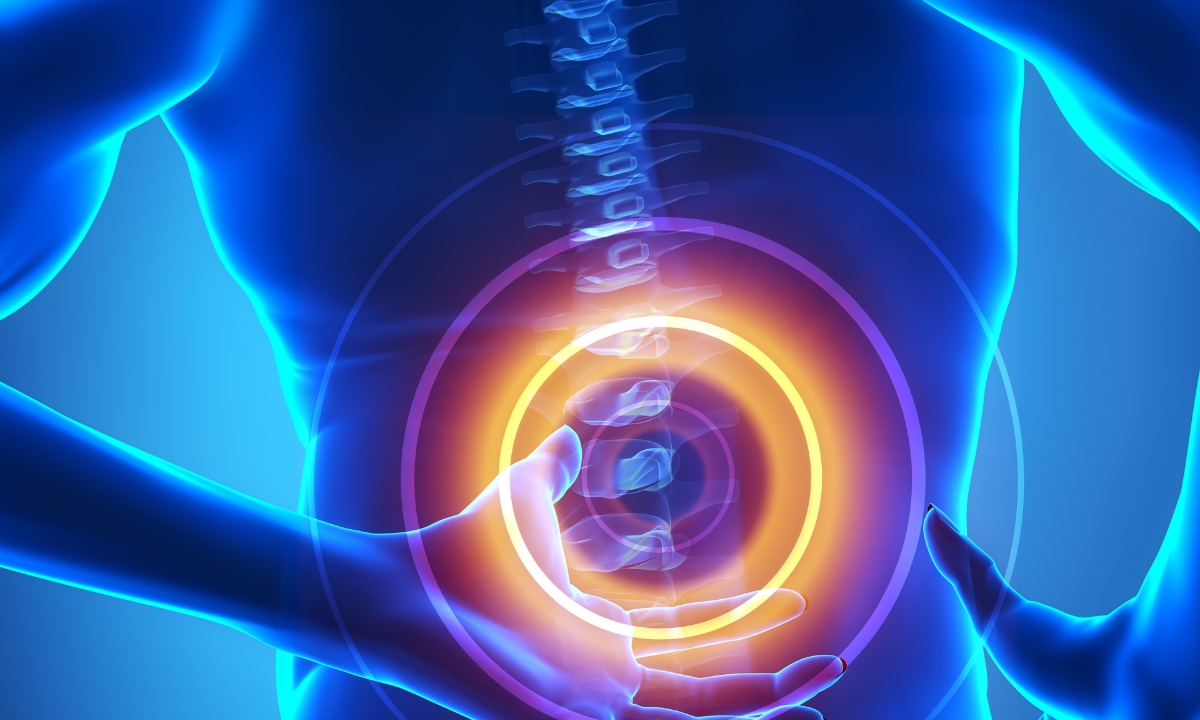“There is probably no other medical condition which is treated in so many different ways and by such a variety of practitioners as back pain. Though the conclusion may be uncomfortable, the medical community must bear the responsibility for this, for it has been distressingly narrow in its approach to the problem.” – John Sarno
Back pain is one of the most common ailments affecting individuals of all ages, often leading to discomfort and reduced quality of life. While many people may instinctively rest when experiencing back pain, recent research highlights the importance of staying active.
And this means more than simply walking and continuing to simply keep moving.
Exercise can be a powerful tool for managing and alleviating back pain, but it’s crucial to find the right activities tailored to your needs. This article explores how exercise can benefit back pain sufferers and offers guidance on selecting appropriate activities.

Understanding Back Pain
Back pain can result from various factors, including muscle strain, herniated discs, arthritis, and poor posture. It can manifest as acute pain, which lasts a few days to weeks, or chronic pain, persisting for three months or longer. Regardless of its origin, back pain often leads to decreased physical activity, creating a cycle of weakness and further discomfort.
Why Exercise Matters
Exercise is essential for strengthening the muscles that support the spine, enhancing flexibility, and improving overall mobility.
As the Mayfield Clinic states on their website,
“Just as the stays support the mast and the cables support the bridge, your core muscles support your spine. The muscles in your abdomen and back – which we call the “core” – are central to your everyday spine health. They are at the heart of any fitness regimen designed to strengthen a healthy or ailing back. Just as you protect your heart through cardiovascular exercises, you will benefit from strengthening your back through core exercises.”
Regular physical activity can also reduce inflammation, improve mood, and boost overall health, making it a crucial component of pain management.
Benefits of Exercise for Back Pain:
- Strengthening Core Muscles: A strong core supports the spine, helping to distribute weight and reduce strain on the back.
- Improving Flexibility: Stretching exercises enhance flexibility, reducing stiffness and improving range of motion.
- Promoting Endurance: Regular exercise increases stamina, enabling individuals to engage in daily activities without exacerbating pain.
- Releasing Endorphins: Physical activity stimulates the production of endorphins, the body’s natural pain relievers, which can help alleviate discomfort.
- Encouraging Good Posture: Exercises focusing on alignment and posture can reduce strain on the back and prevent future injuries.
Choosing the Right Activities
While exercise is beneficial, not all activities are suitable for individuals experiencing back pain. It’s essential to choose low-impact exercises that promote strength, flexibility, and endurance without putting undue stress on the back. Here are some recommended activities:
- Walking
Walking is one of the simplest yet most effective exercises for back pain. It’s low-impact, can be done almost anywhere, and helps improve circulation and strengthen the muscles in your legs and back. Start with short walks and gradually increase the duration and intensity as your comfort level improves.
- Swimming
Swimming and water aerobics are excellent choices for individuals with back pain. The buoyancy of water reduces stress on the joints and spine, allowing for more comfortable movement. Swimming engages multiple muscle groups while promoting flexibility and strength.
- Yoga
Yoga incorporates stretching, strengthening, and relaxation techniques, making it ideal for back pain relief. Many poses focus on spinal alignment and core strength. Classes designed specifically for back pain can guide you in gentle movements that promote healing.
- Pilates
Similar to yoga, Pilates emphasizes core strength, stability, and flexibility. This exercise form is particularly beneficial for building a strong foundation to support the spine. Many Pilates exercises can be modified for different fitness levels and pain thresholds.
- Strength Training
Light resistance training can help strengthen back and core muscles. Focus on exercises that target the abdominal and lower back muscles, such as bridges, planks, and bird-dogs. Always prioritize form over weight and consider working with a physical therapist to ensure proper technique.
- Tai Chi
Tai Chi is a gentle form of martial arts that emphasizes slow, controlled movements and deep breathing. This practice improves balance, flexibility, and strength while reducing stress and promoting relaxation—beneficial for those coping with chronic pain.
Precautions to Consider
Before starting any exercise program, particularly if you have existing back pain, it’s crucial to consult with a healthcare professional or physical therapist. They can provide personalized recommendations based on your specific condition and help design a program that suits your needs.
Tips for Safe Exercise:
- Start Slowly: Gradually increase the intensity and duration of your workouts to avoid aggravating your pain.
- Listen to Your Body: Pay attention to how your body responds to different exercises. If an activity causes increased pain, stop and consult a professional.
- Warm Up and Cool Down: Always include warm-up and cool-down sessions in your routine to prepare your muscles and promote recovery.
- Focus on Form: Proper technique is essential to prevent further injury. If unsure, seek guidance from a qualified instructor or therapist.

Taking Action for Pain Free Living
Exercise is a powerful ally in managing back pain. By engaging in the right activities, individuals can strengthen their bodies, improve flexibility, and ultimately reduce discomfort. It’s important to choose low-impact exercises that are safe and effective, allowing you to maintain an active lifestyle while addressing pain.
Remember, the journey to pain relief is personal and may require patience and persistence. Consult with healthcare professionals to create a tailored exercise plan that best suits your individual needs. With the right approach, you can take significant strides toward a pain-free life, empowering you to engage fully in all the activities you love.
Your Partners for Back Pain Relief: Pain and Performance Solutions in Santa Rosa
If you’re suffering from chronic back pain, we invite you to start the journey towards total pain relief.
Some of the many approaches we utilize to enhance pain relief are Active Release Technique®, or ART®, and NeuroKinetic Therapy™, or NKT™ which are proven methods for addressing a diverse range of soft tissue and joint pain. All of our therapies are proven to be effective and are free of pharmaceuticals, while being remarkably efficient.
During our preliminary consultation and evaluation, we will work with you to establish a comprehensive understanding of your existing pain issues, your history concerning back pain and discomfort, any distress you may have encountered, and your current physical activity level.
Call us today at (707) 636-4404 or make use of our online booking form to schedule a consultation and pay a visit to our office.
